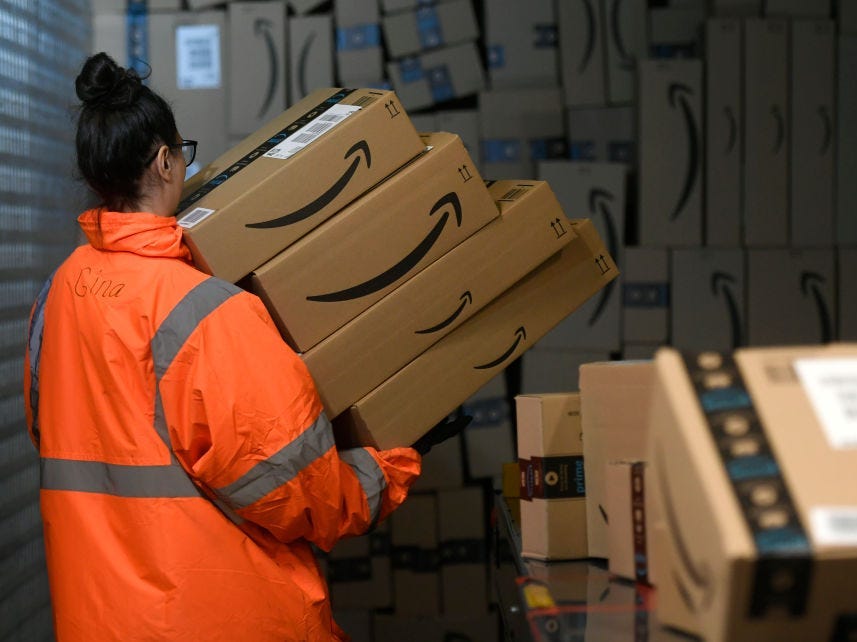
- Some Amazon policies were built to stop a "march to mediocrity," according to one plan architect.
- Employment model and performance trackers were reportedly created to keep workers on their toes.
- The New York Times revealed the restrictive policies that govern one of the nation's top employers.
- See more stories on Insider's business page.
Many of Amazon's policies were designed to prevent low-skilled workers from becoming lazy, according to a recent report from The New York Times.
David Niekerk, a former Amazon vice president who helped design company's warehouse management system, told the publication that Amazon founder Jeff Bezos' belief that all people are inherently lazy helped shape many of the company's policies.
Niekerk told the Times that Bezos believed that workers' desire to perform well decreases over time, a movement that the former CEO called a "march to mediocrity."
"What he would say is that our nature as humans is to expend as little energy as possible to get what we want or need," Niekerk told The New York Times.
He pointed to Amazon's short-term employment model that does not provide employees many opportunities for advancement within the company, as well as the way Amazon uses technology to keep workers on task. He said the company did not guarantee wage increases after a worker's first three years, as way to oust employees who might become too comfortable at Amazon or turn "disgruntled."
The practices that Niekerk cites are some of the company's most contentious methods - processes like firing employees for a single day of low productivity, as well as continually keeping workers on task with limited break time and high productivity goals. The practices have left many workers feeling as if Amazon treats them more like machines than people, the Times reported.
"We are human beings," an employee wrote on a warehouse's internal feedback board, the Times reported. "We are not tools used to make their daily/weekly goals and rates. "
Amazon's work culture and high expectations for employees have also made the company a leader in workplace injuries. Earlier in the month, The Washington Post reported that Amazon warehouse workers are nearly twice as likely to face serious injuries as workers from other companies like Walmart.
In April, Bezos said the company was working "to do a better job for employees." He said Amazon will invest over $300 million in 2021 to make warehouses safer and emphasized the company needs "a better vision for how we create value for employees - a vision for their success. "
Amazon representatives didn't respond to a request for comment as of publishing.
Read the full story at The New York Times' site.
